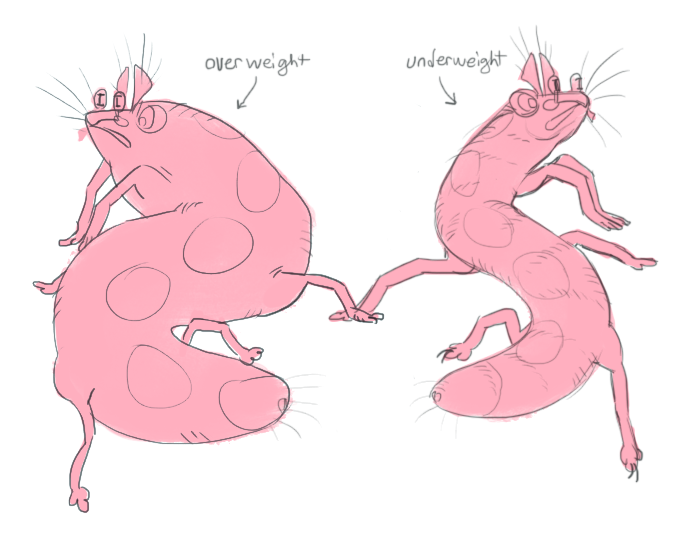Bug ferrets are from an iceball planet where most organisms live underground in the tropical band of the otherwise glacial planet. After millions of years of subterranean life, the tropics are now riddled with vast networks of biologically formed tunnels, caves, and seas. Ferrets rose from a strain of endothermic and highly social omnivores. They have both an endoskeleton (mostly for muscle support) and an exoskeleton covered by a thick layer of subcutaneous fat, skin, and dense, highly sensitive hairs and whiskers. Ferrets wear minimal clothing, if any, because it irritates their delicate hairs. Their central nervous system goes down the length of their body, and they are unusually fast at processing sensory data.
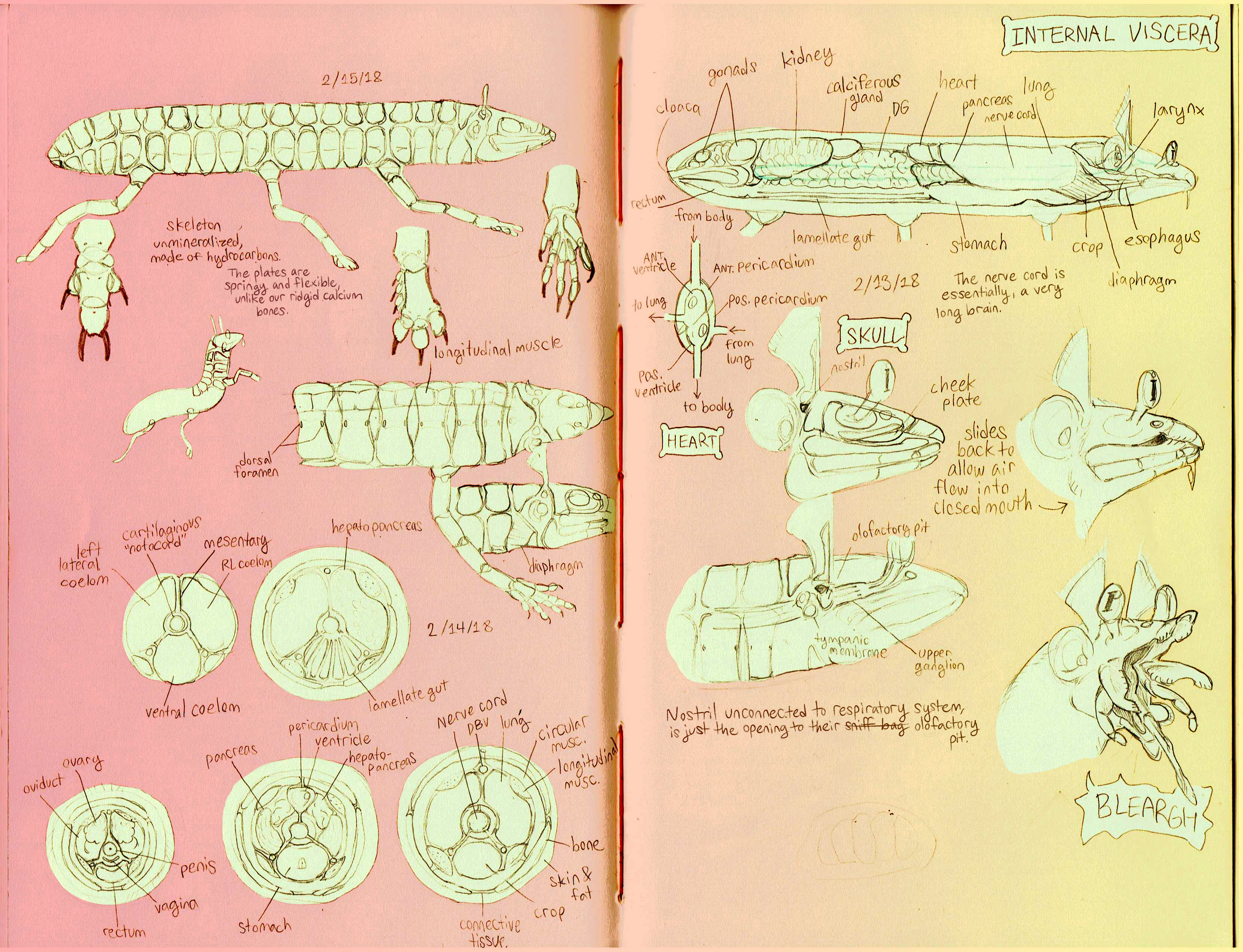
When it comes to bones, bug ferrets are a weird case. Their distant ancestors were exoskeletal and molted to grow in size. A clade split off from this group that had less molting events during life, instead molting from an exoskeletal larvae into an adult form that had a layer of fat and skin over the skeleton, allowing for continuous growth and reshaping of the bones on all sides by living cells. Bug ferrets are descendants of that clade, but now their only true exoskeletal stage is embryonic. The bug ferret exoskeleton is now tough but springy plates that run the length of their body like a living armor– very useful for shoving your body through dirt and surviving tunnel cave-ins. Some hard plates on the face, like the mouth parts and eye caps, are still technically exoskeletal and get shed annually.
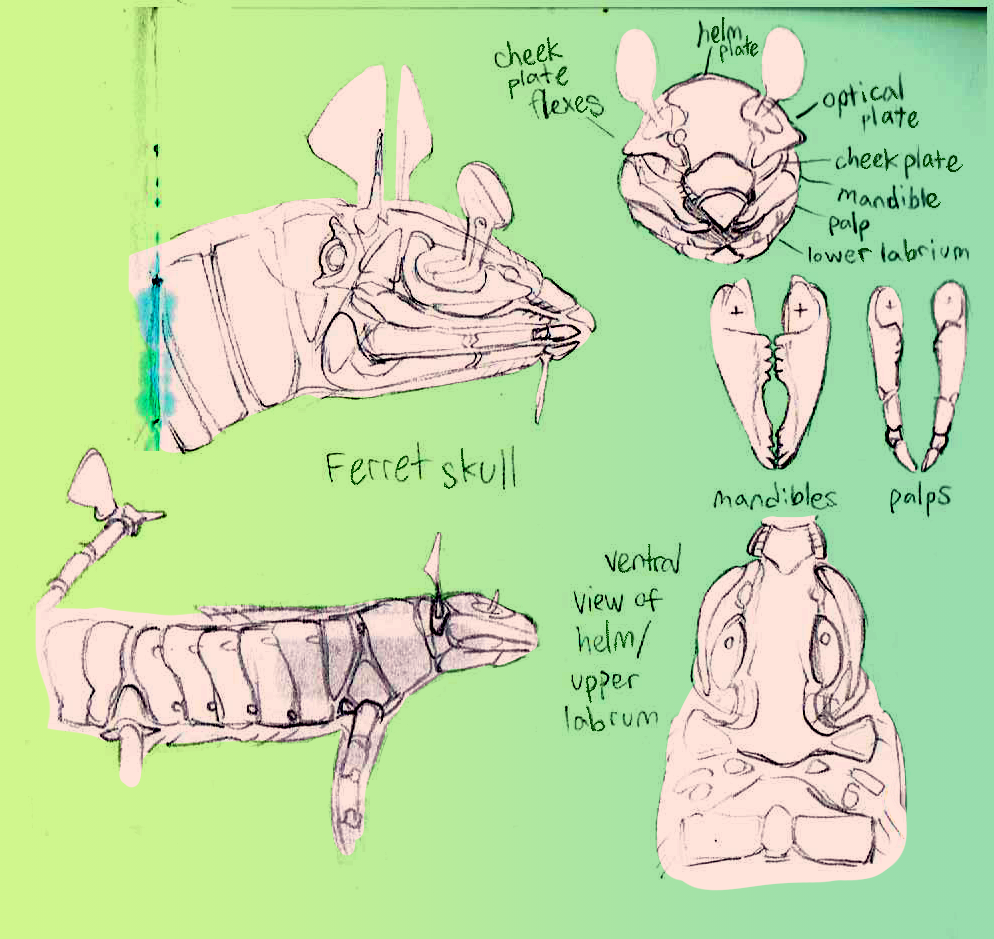
Drawn 11/22/19
Because of this evolutionary history, most bug ferret muscles attach inside their hollow, tubular bones, such as the retractor muscle of their claws. Fat storage is on the outside of their bones, allowing them to gain adipose tissue freely, but they have a hard limit on how much muscular bulk their body can support.
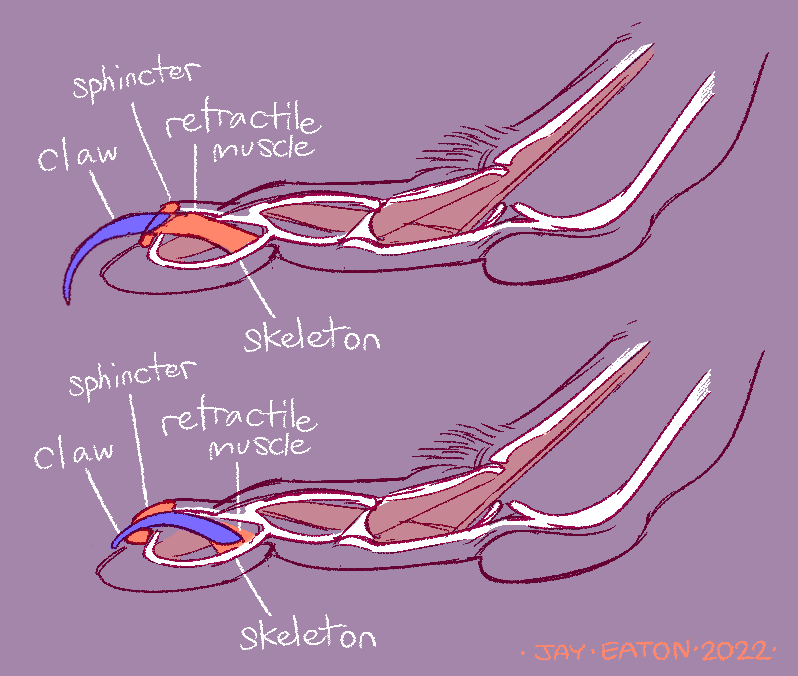
Some tradeoffs for this pseudo-endoskeletal body plan are less flexible joints and relatively few nerve foramena linking the brain to the skin and adipose tissue. If one of the foramena is damaged, then a large area of the skin can lose sensation. Their whiskers help make up for this wiring problem, as they attach to roots beneath the bone plates.
Bug ferrets are used to much lower oxygen environments than other sophonts, but higher O2 concentrations don’t harm them. Ferret gas mixes tend to feel “stuffy” to aliens, though. They have a specific organ in their body to help cope with excess CO2 buildup in their blood called a calciferous gland, which converts the gas into calcium carbonate.
Ferrets are very tolerant of low oxygen and cold, they are not great with heat. They have two different respiratory pigment molecules, a highly efficient iron-based one that is most effective at lower temperatures, and a less efficient copper-based one that is a temperature generalist. The copper-based molecule working alone cannot support their body functions indefinitely and bug ferrets are known to pass out at temperatures exceeding 35 degrees Celsius, which humans and centaurs consider merely annoying at low humidity, and avians consider comfortable at any humidity.
Bug ferrets chew solid food with their mandibles and manipulate it with their palps, which bend like jointed fingers. Liquids are consumed with their long pointed tongue, which has two strips of thin curled flesh forming tubes. Liquids can be wicked and sucked up their these tubes. Recent ancestors of bug ferrets use this tongue structure to extract nectar from angioform producers and decomposers.
Their gut is typically constructed towards the front, with a linear esophagous and digestive stomach, but in the lower half of their body it splits into lamilate structure. While the guts of other sophonts increase surface area mostly by increasing in length, bug ferrets achieve this with large flat segments of gut tissue, somewhat resembling gill structures.
Bug ferrets have a pair of large eyes that function similar to ours, despite being on stalks, with a lens, retina, iris, and pupil shaped like a serif “I.” Their pupils expand into a rectangular shape in lower light conditions. They have four primary light receptors, three color sensitive cells that detect red wavelengths, yellow wavelengths, and green wavelengths, and a high sensitivity cell for low light vision that does not distinguish between hues. Ferrets cannot distinguish blue, violet, or ultraviolet, which appear to them as greenish greys or black. Magenta appears to be a dark reddish color.
Their smaller pair of “eyes” are actually sophisticated heat-sensing pits, allowing them to perceive infrared radiation through heat gradients and detect the location of some objects in total darkness. This vision is “focused” through rapid aspiration behind the pit membrane, cooling it and making it more sensitive to heat gradients. Extremely hot or humid conditions can essentially blind the pit eyes, because a ferret cannot pant effectively enough to cool the membrane.
Functionally heat gradients are perceived like black and white light vision, but the "hot white" is categorized as a separate "color" in the brain; different from red, yellow, green, and their combinations. Something can be simultaneously "cold black" and white, like ice; or "hot white" and black, like heated cast iron.
Ferrets have relatively poor hearing compared to other sophonts, with their ear structure consisting of an external tympanum inside a disc-like non-motile pinnae. Ferrets have difficulty perceiving details on noises, especially on those of higher pitches. Some spacefarer ferrets get cybernetic implants to increase their hearing range and fidelity to improve their understanding of alien languages.
Their upper antennae have a unique auditory function. When touched to a solid surface, they can detect minute infrasonic vibrations in the surrounding substrate. This allows bug ferrets “hear through walls,” perceiving a 3D map of activity or motion elsewhere in a connected structure.
Ferrets have highly variable sleep patterns, since there is no real day cycle underground. They will frequently take short 1-4 hour naps, and every 30 hours or so a household will usually all pile into one room and snooze together. Compared to other sophonts they are very light sleepers, but quick to fall back asleep again.
Ferrets are simultaneous hermaphrodites, and generally speaking every ferret has a sire parent, layer parent, and an egg sibling. Ferrets usually don’t know their sire parent, since families can have over a dozen adults who all mate with each other, but the layer parent is usually known (at the very least for medical record purposes). Ferrets lay egg cases with two embryos each, and egg siblings are referred to as twins. Typically the ‘twin’ a ferret is born with has higher social significance than their sire parent, so they’re more likely to know their layer’s twin and grand-layer’s twin, and etc. In place of human concepts of father/grandfather etc you typically would refer to your non-parent family and grand non-parent family (or just family and grandfamily, to make things more confusing).
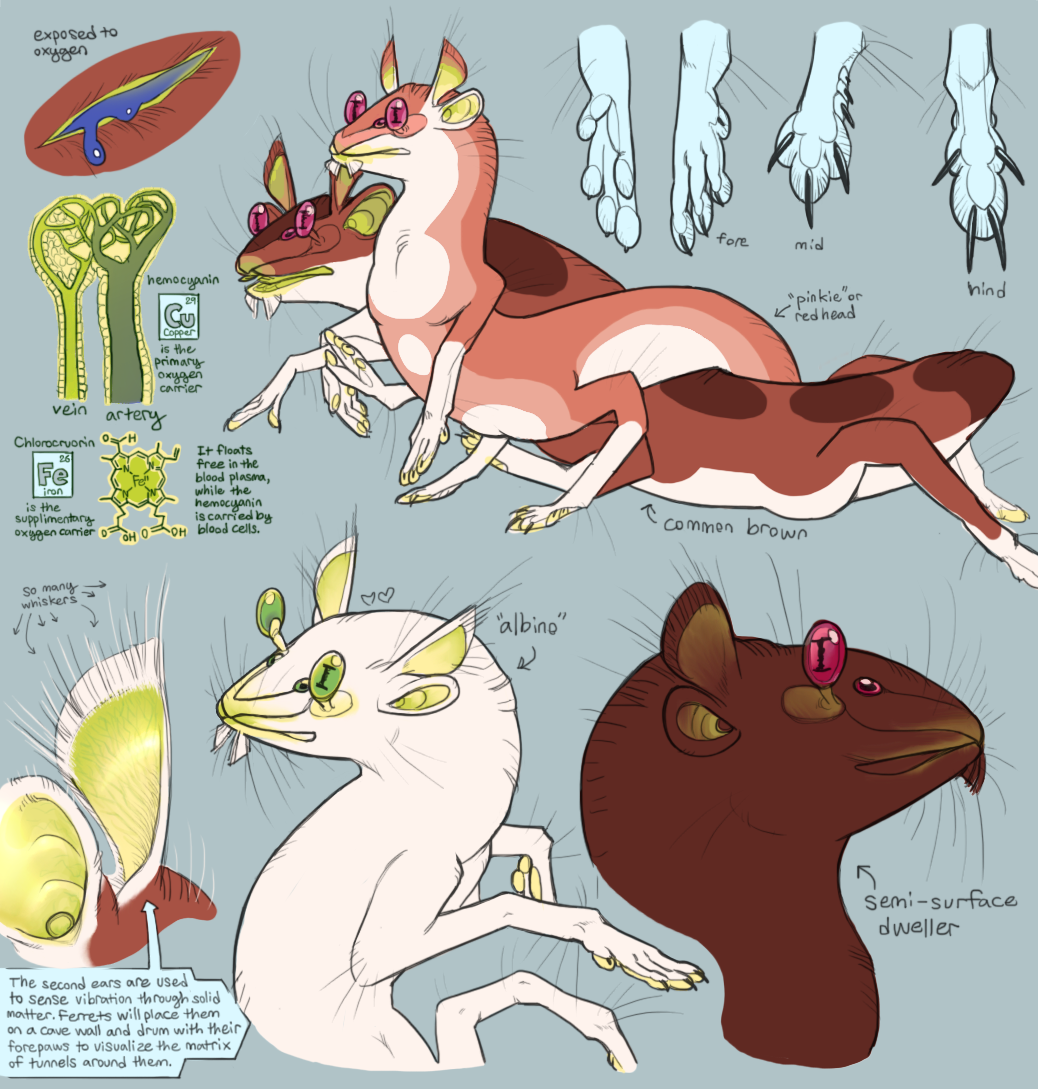
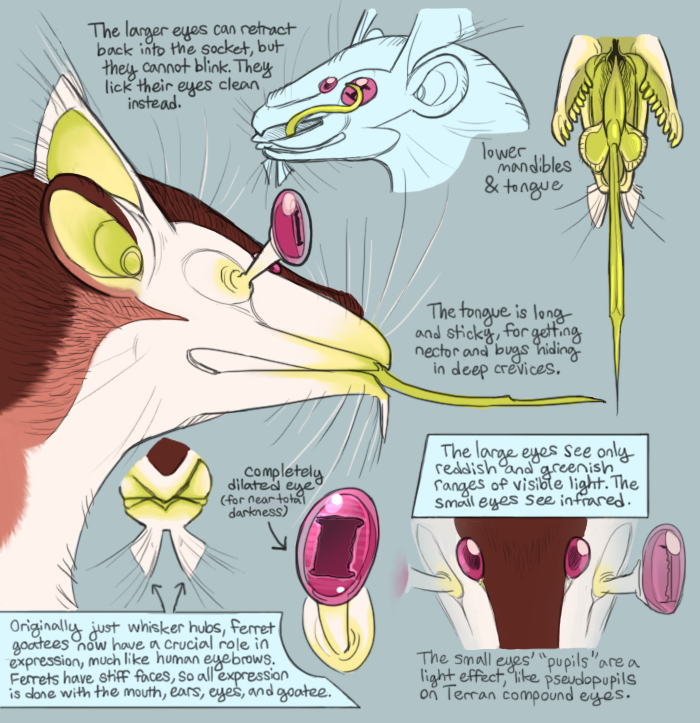

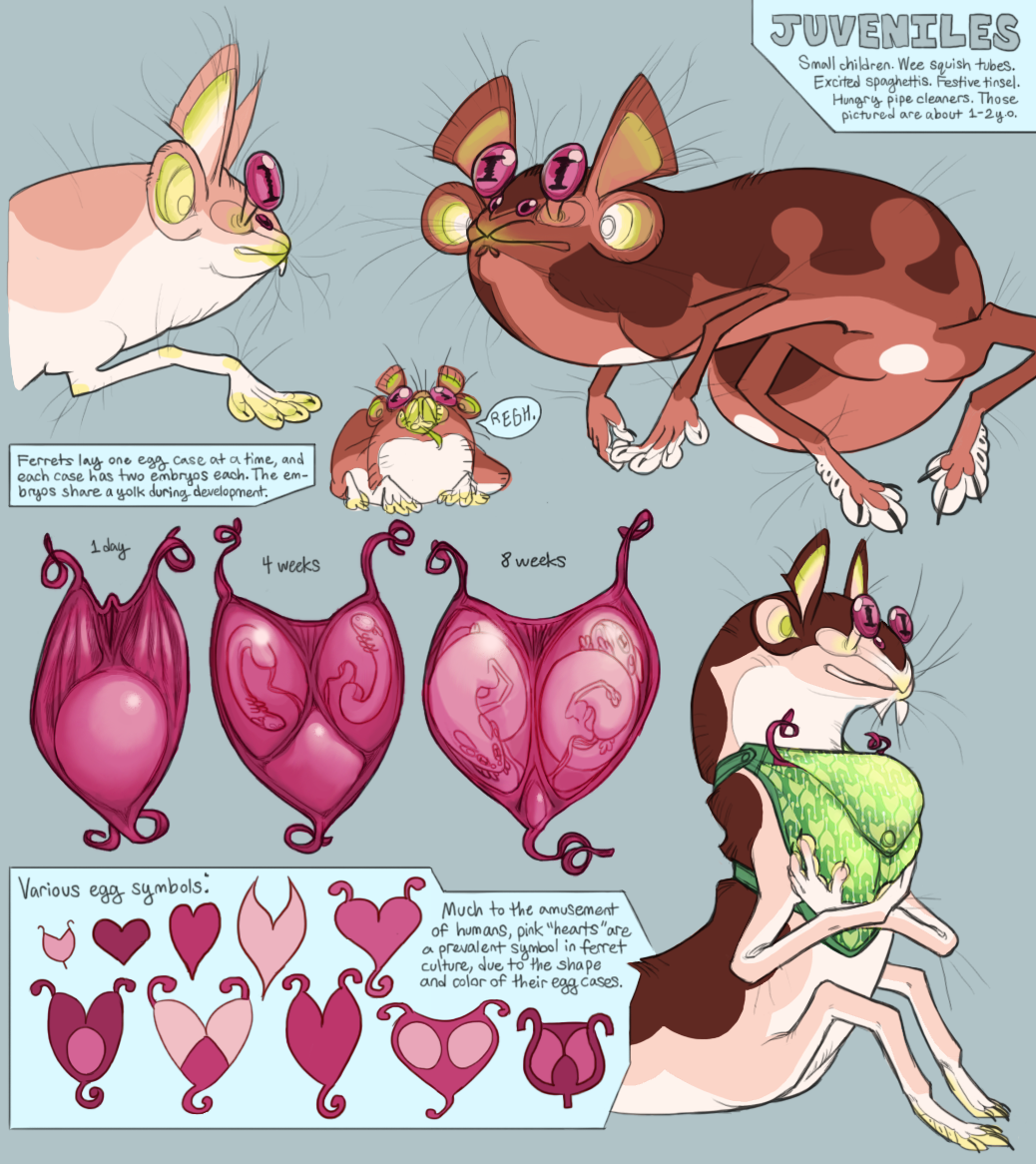
Drawn 1/18/17
